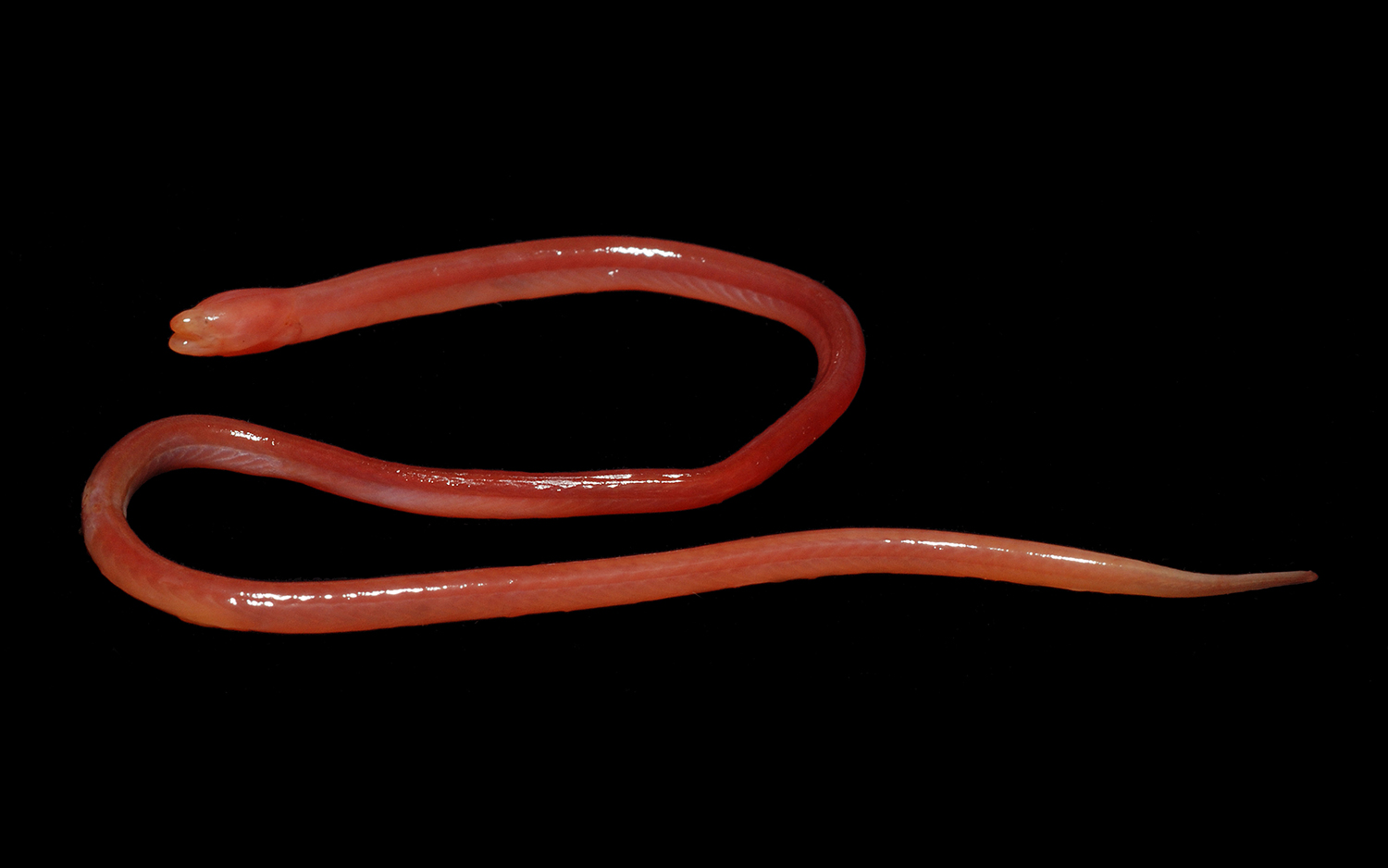This Bizarre, Blind Swamp Eel Breathes Through Its Blood-Red Skin

A newly discovered species of swamp eel is a blind, blood-red mouth-breather that tunnels through dirt and will lunge straight into your nightmares.
The slippery eel is native to northeast India and while it's a type of fish, it has neither fins nor scales, and its elongated, limbless body makes it look more like a snake. Dubbed Monopterus rongsaw, its species name comes from the word in the local Khasi language for "red" — a nod to the creature's vivid color, scientists reported in a new study.
Swamp eels are unusual among fish in that they are able to live out of water and breathe air, and the new discovery is no exception — researchers found the slender, eyeless eel writhing under moist, rocky soil about 164 feet (50 meters) from a nearby stream. Its bright red color is a hallmark of an adaptation for surviving on land, where other fish would swiftly suffocate. [Photos: The Freakiest Looking Fish]
Fish typically draw oxygen from water by filtering it through their gills. But swamp eels, also known as synbranchids, have reduced gills, and instead suck oxygen directly from the air through their mouths, using specialized tissue threaded with a dense network of blood vessels, lead study author Ralf Britz, a fish researcher with the Department of Life Sciences at the Natural History Museum (NHM) in London, told Live Science in an email.
And the newly discovered eyeless swamp eel has one more trick for extracting oxygen from air: "skin breathing," or absorbing oxygen directly through its skin, Britz said. Like the flesh in its mouth, the eel's skin is also crammed with blood vessels, which lend the animal its red color, he explained.
No eyes, no problem
The researchers discovered M. rongsaw unexpectedly, while they were digging in the dirt in search of caecilians, a type of legless amphibian. They found only one specimen of the blind, blood-red swamp eel, at a depth of about 16 inches (40 centimeters) below the surface, according to the study. Its underground lifestyle likely eliminated its need for sight; its eyes were tiny, covered with skin, and "barely visible externally," the researchers reported.
Differentiating between swamp eel species can be very tricky; fish biologists typically compare physical features such as fins or scales in order to tell species apart. Unhelpfully, swamp eels have none of those features.
Sign up for the Live Science daily newsletter now
Get the world’s most fascinating discoveries delivered straight to your inbox.
To find out whether the blood-red newcomer was a unique species, the scientists needed to look at its bones. Clues to its idenity would lurk in the number of its vertebrae, and in details in its skull shape and in the structure of the skeleton around its gills, Britz said.
To do so, they used noninvasive computed X-ray tomography (CT) scanning to examine what the eel looked like on the inside in 3D, and to confirm that it represented a species that was new to science.
The region of India that the eel calls its home was long thought to be a dispersal gateway — a zone through which numerous species pass — rather than a habitat for permanent residents, but the blood-red swamp eel and other recent discoveries show that northeastern India harbors its own communities of unique species, study co-author Rachunliu G. Kamei a postdoctoral researcher at NHM, told Live Science in an email.
The findings were published online Aug. 2 in the journal Ichthyological Exploration of Freshwaters.
Originally publishedon Live Science.

Mindy Weisberger is an editor at Scholastic and a former Live Science channel editor and senior writer. She has reported on general science, covering climate change, paleontology, biology and space. Mindy studied film at Columbia University; prior to Live Science she produced, wrote and directed media for the American Museum of Natural History in New York City. Her videos about dinosaurs, astrophysics, biodiversity and evolution appear in museums and science centers worldwide, earning awards such as the CINE Golden Eagle and the Communicator Award of Excellence. Her writing has also appeared in Scientific American, The Washington Post and How It Works Magazine. Her book "Rise of the Zombie Bugs: The Surprising Science of Parasitic Mind Control" will be published in spring 2025 by Johns Hopkins University Press.










